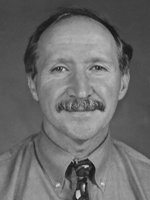
Hands-on, Practical Guidance for Educators
From math,
literacy, equity, multilingual learners, and SEL, to assessment, school counseling,
and education leadership, our books are research-based and authored by experts
on topics most relevant to what educators are facing today.
Teaching Matters Most
Foreword by Deborah Meier
A Co-Publication With Learning Forward
This book’s three-step process outlines how to envision what great teaching looks like, measure current instruction against that standard, and work relentlessly to improve instruction accordingly.
- Grade Level: PreK-12, Elementary, Secondary
- ISBN: 9781452205106
- Published By: Corwin
- Year: 2012
- Page Count: 208
- Publication date: December 24, 2012
Price: $40.95
For Instructors
When you select 'request review copy', you will be redirected to Sage Publishing (our parent site) to process your request.
Description
A laser-beam focus on improving instruction to improve learning
Saying "teaching matters most" is easy, and seems obvious. Making it the top priority for school leaders and staff is not so easy—in fact, it's messy. If we want to change how students write, compute, and think, then teachers must change how they teach. They must transform the old "assign-and-assess" model into engaging, compassionate, coherent, and rigorous instruction. The authors show school leaders how to make this happen amidst myriad distractions, initiatives, and interruptions.
Unlike other books that stop at evaluating teachers and instruction, this work demonstrates how to grow schools' instructional capacities with a three-step process that involves:
- Envisioning what good teaching looks like
- Measuring the quality of current instruction against this standard
- Working relentlessly to move the quality of instruction closer and closer to the ideal
The authors provide helpful guidance on issues such as hiring, induction, professional development, mentoring, and teacher evaluation. Each chapter offers specific action steps toward building the blueprint for improvement. Also included are frameworks for completing instructional audits in schools, and probes, instruments, and protocols for measuring and tracking the quality of instruction. Leaders will find excellent guidance for spearheading and sustaining a focused and aligned effort to improve the quality of teaching to impact all learners.
Key features
- Provides school leaders with a vision of what exceptional teaching looks like and a blueprint for achieving serious improvement in the overall quality of teaching in their schools.
- Focuses intentionally and sharply on a limited number of pedagogical priorities for growing the instructional capacities within their schools, including induction and mentoring, ongoing professional development, teacher evaluation that includes the use of student insights, and sustaining exceptional instruction.
- Offers probes, observational frameworks for completing instructional audits in schools, instruments, and protocols to use in measuring the quality of instruction in a school at the moment, and tracking changes over time.
- Each chapter concludes with Questions for Discussion and Reflection and Action Steps for Getting Started
Author(s)

Thomas M. McCann
Thomas M. McCann is an associate professor of English at Northern Illinois University, where he contributes to the teacher certification program. He taught high school for 25 years, including seven years working in an alternative high school. He has been a high school English department chair, an assistant principal, and an assistant superintendent. His published work has appeared in Educational Leadership, Research in the Teaching of English, the English Journal, and the Illinois English Bulletin. His co-authored books include Explorations: Introductory Activities for Literature and Composition, 7-12 (National Council of Teachers of English, 1987), In Case You Teach English: An Interactive Casebook for Preservice and Prospective Teachers (Merrill/Prentice Hall, 2002), Supporting Beginning English Teachers (NCTE, 2005), and Talking in Class (NCTE, 2006). He edited and contributed a chapter to Reflective Teaching, Reflective Learning (Heinemann, 2005). He is the co-author of The Dynamics of Writing Instruction (Heinemann, 2010). The National Council of Teachers of English awarded him the Richard A. Meade Award for research about the concerns of beginning teachers. He also received the Paul and Kate Farmer Award from NCTE for his writing for the English Journal.

Alan C. Jones
Dr. Alan C. Jones is an Associate Professor of Educational Administration for Saint Xavier University, Chicago, Illinois. His teaching career includes teaching English at DuSable Upper Grade Center in Chicago, Illinois, and social studies at Thornton Township High School, in Harvey, Illinois. He began his administrative career as an Activities Director at Thornton Township High School and went on to become an Assistant Principal at Bremen Township High School and served as Principal of Community High School District 94, in West Chicago, Illinois for seventeen years. Under his leadership, Community High School was awarded the Blue Ribbon School of Excellence in 1993 and was recognized as a 1995 School of Excellence by HISPANIC Magazine. His publications include articles in educational journals on instructional leadership and school reform, and two books: Students! Do Not Push Your Teacher Down the Stairs on Friday: A Teacher's Notebook (Quadrangle Books, 1972) and Becoming A Strong Instructional Leader: Breaking the Cycle of Reform Failure (Teachers College Press, 2012).

Gail A. Aronoff
Mrs. Gail Aronoff is an educational consultant who worked for 37 years in several schools, both as teacher and administrator. She has worked with students with special needs in elementary, middle school, and high school, and served as a liaison between schools and the families of struggling learners. At the high school level, she taught struggling learners for fourteen years and held the position of Assistant Principal for Student Services for twelve years. She served a highly diverse population with many ESL students as well as those from low income families. She has mentored and supervised teachers and administrators, creating and implementing model programs to address the needs of reluctant learners and those with special needs. Mrs. Aronoff currently serves as a consultant to schools for school improvement and reform.
Table of Contents
Foreword by Deborah Meier
Preface: Lessons Learned From Experience
A “New” Take in School Improvement
Central Theme
Organization of the Book
What Makes This Book Distinctive
Acknowledgments
About the Authors
1. What are common practices in schools?
What We Found in Classrooms
Truths Hidden in Plain View
Transforming Accountability
New Direction
Are There “Best Practices” in Teaching?
Bringing Best Practices to Scale
Are Some Practices Better Than Others?
The Poverty of Prescribing Best Practices
2. What distinguishes quality teaching?
Three Classrooms, Three Practitioners
A Simple Truth Hidden in Plain View
Disjointed Teaching
Why Teachers Are Frustrated
What Is Quality Teaching?
Observing High-Quality Teaching
Instructional Systems
The Road Less Traveled
3. How do we learn about the quality of our teaching?
How to Make the Case for an Emphasis on Teacher Quality
Three Leadership Requirements
Defining Quality Teaching
How to Engage School Personnel in Devising a Vision of Quality Instruction
Some Rudiments of Quality Teaching
The Importance of Curriculum Coherence
Learning From Students
The Current State of Teaching in Your School
How to Evaluate the Quality of Teaching in Your School
4. What should induction and mentoring look like?
Basic Components of a Teacher Mentor Program
Facing Critical Junctures Together
Planning for New Teachers’ Success
5. What should professional development look like?
What We Know About Professional Development
The Disregarded Truths of Professional Development
The Components of a Professional Learning Culture
Building Blocks of Professional Learning
Leading Professional Learning Communities
6. How can teacher evaluaiton become more meaningful?
“Drive-By” Teacher Evaluation
“Absentee Landords”
Lists and Rubrics Abound
7. How can we sustain a culture of exceptional instruction?
Ten Actions to Sustain High-Quality Teaching
Systems in Place
Sanctity of the Classroom
Envisioning Quality Teaching
Right People in Right Places
Balanced Leadership
Clear and Timely Communication
Standards for Professional Conduct
Collaboration
Reflection and Continuous Improvement
Ongoing Professional Dialogues
8. How do we face our leadership challenges?
Suppressing Distraction
Building Principal’s Knowledge
Building Trust
Influencing Resistant Teachers
Coping With the Pace
Final Thoughts
Resources
A. How Can You Spot a Really Good Teacher?
B. Framework for Observing Classes
C. Student Forum Questions
D. Teacher Interview Questions
References
Index
Reviews
"A comprehensive book that provides site administrators not only the opportunity to reflect on their own practices but challenges them to reconsider the daily operations of their schools. The recommendations meld theory and practice together in an administrator-friendly way."Sammie Cervantez, Principal
Munsey Elementary School, Bakersfield, CA
"This is a good book principals can use for faculty book study. It will lead to authentic dialogue about good teaching: how to get to it and how to maintain it."Patricia Long Tucker, Superintendent
Altadena, CA
"This is an excellent book for administrators to build a focused, long-term solution to improve what happens in every classroom on a daily basis."Kathy Tritz-Rhodes, Elementary Principal
Marcus-Meriden-Cleghorn Schools, Marcus, IA
"A major strength of this book is how it identifies and puts in one place the key elements needed to improve student learning."Dr. Laurie Emery, Principal
Old Vail Middle School, Vail, AZ
"I recommend this book for new principals and superintendents in induction programs. The content will inspire thoughtful discussions and lead to effective action plans."Dr. Gayle Wahlin, Director of Leadership Services
DuPage Regional Office of Education , Downers Grove, IL
"In Teaching Matters Most, the authors remind us that to provide students with the highest quality of education, we must refocus on defining the quality of instruction in the classroom and building support systems for the teachers providing that instruction."Matthew Haug, Principal
Central High School, Burlington, IL
"I am grateful to, and appreciative of, the authors of Teaching Matters Most for their efforts to improve student learning through the examination of classroom instruction. The authors offer practical and useful strategies that allow teachers to review their practices through frequent reflections. The book guides staff through activities that focus on their instructional practices for maximum student learning. I believe that study of this book can be a continuous professional development activity for teachers and school leadership teams."James Pluskota, Principal
Edison School, Elmhurst, IL
For Instructors
When you select 'request review copy', you will be redirected to Sage Publishing (our parent site) to process your request.

